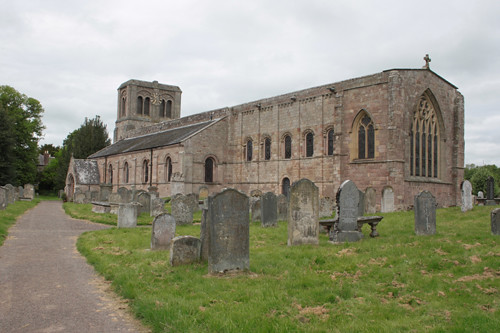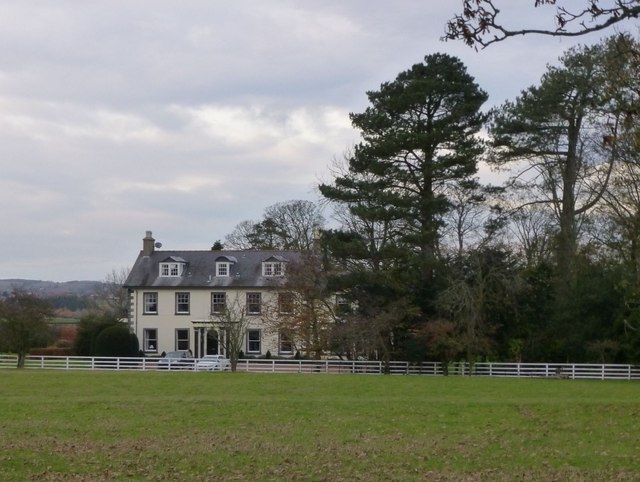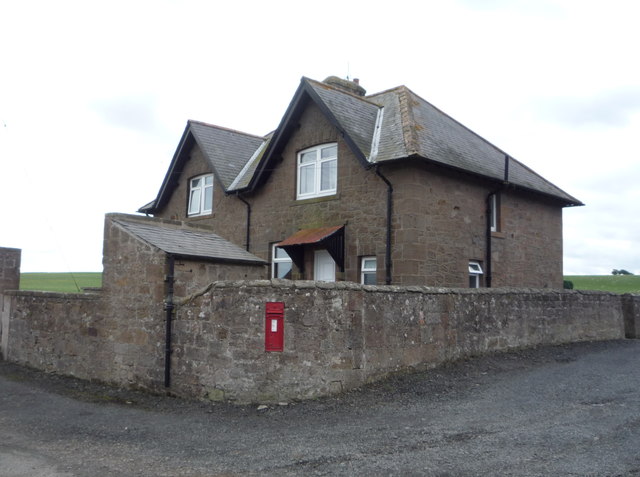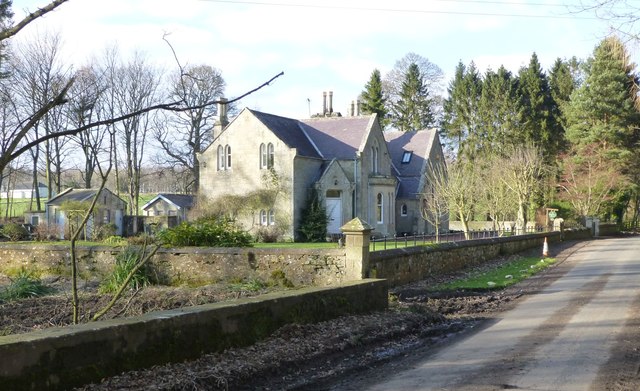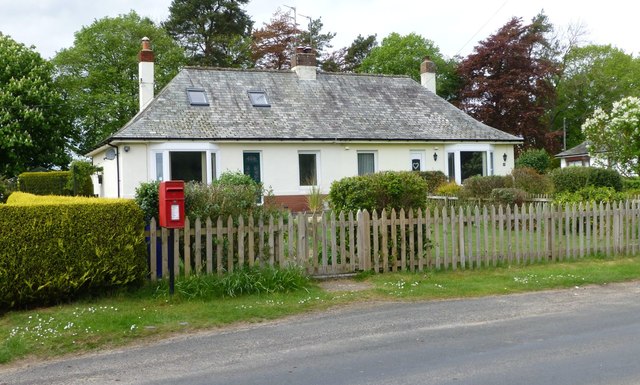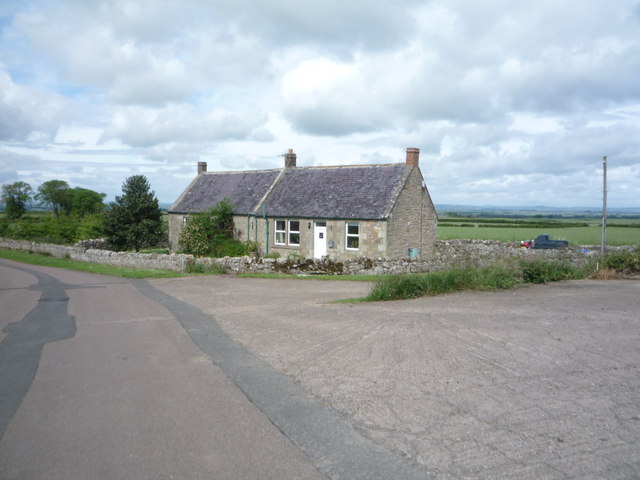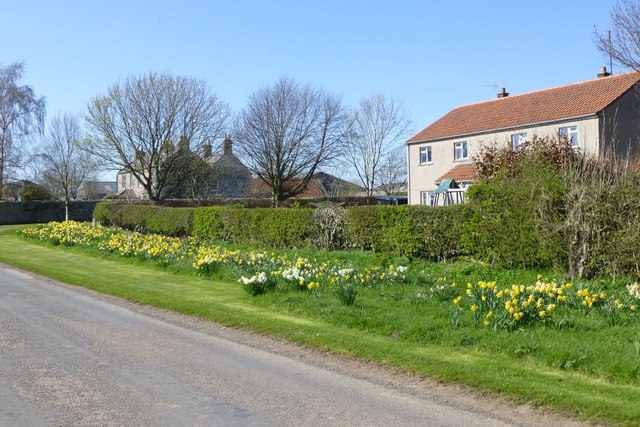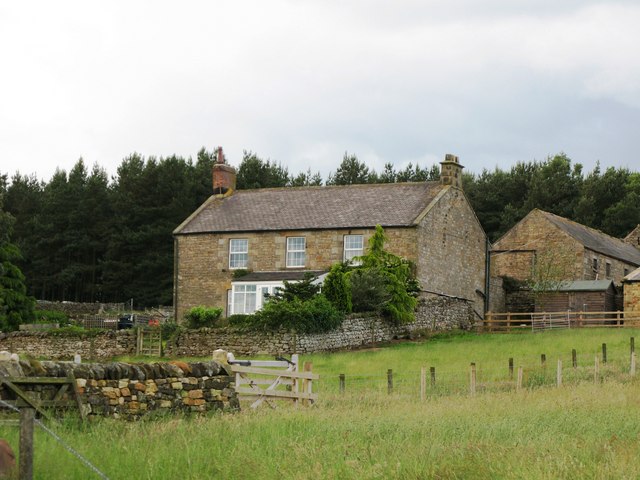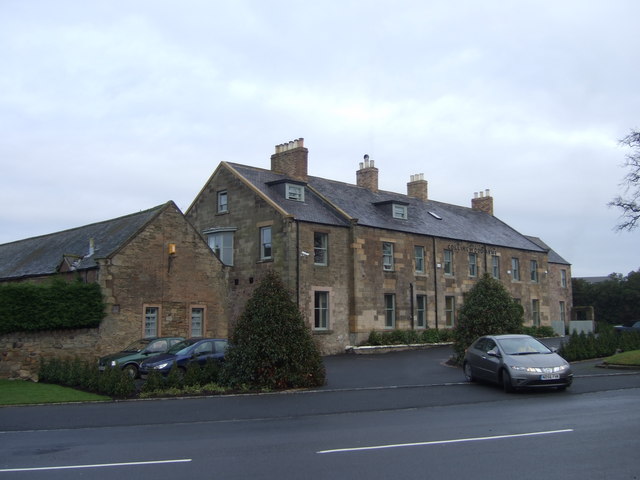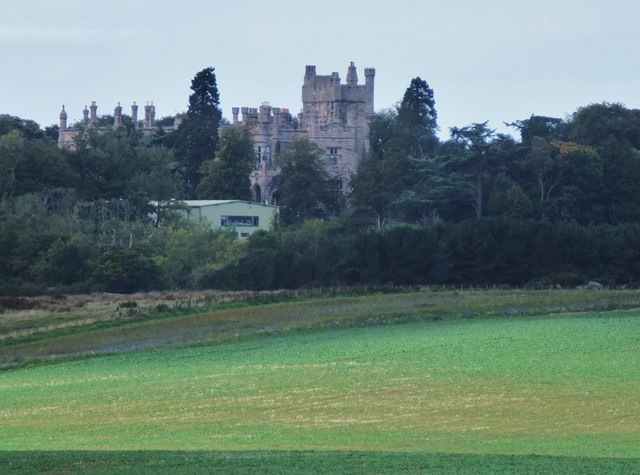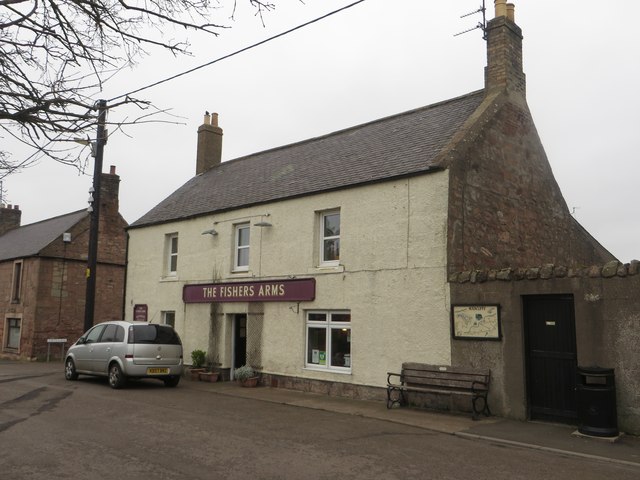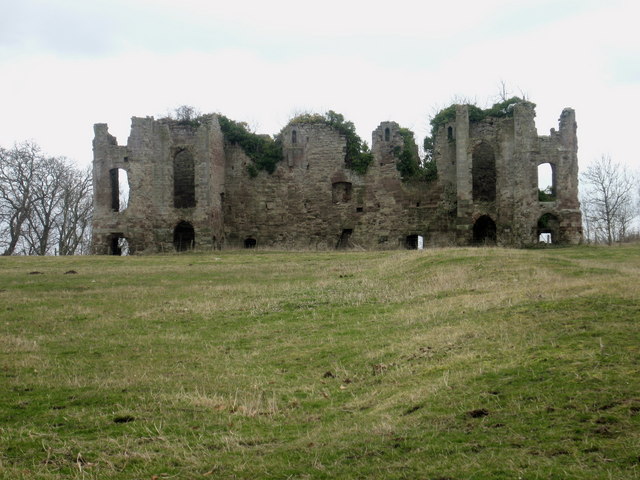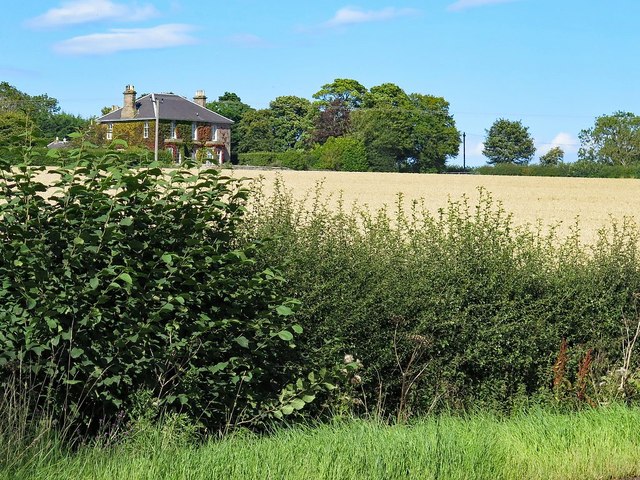Topics > Northumberland > Civil Parishes in Northumberland > Norham Civil Parish > Norhamshire, 1855
Norhamshire, 1855
Extract from: History, Topography, and Directory of Northumberland...Whellan, William, & Co, 1855.
NORHAMSHIRE
NORHAM, or NORHAMSHIRE, is a parish co-extensive with the hundred of the same name, and forming, until the passing of the 7 and 8 Vict. c. 61, a detached part of the county of Durham. It is bounded on the north and west by the river Tweed, on the south by Glendale Ward, and on the east by Islandshire. It comprises the chapelry of Cornhill, and the townships of Duddo, Felkington, Grindon, Horncliffe, Loan-end, Longridge, Norham, Norham Mains, Shoreswood, Thornton, and Twizell, whose united area is 19,849 statute acres. The population of Norhamshire, in 1801, was 3,384; in 1811, 3,524; in 1821, 3,906; in 1831, 3,744; in 1841, 3,757; and in 1851, 4,289 souls. There are many freeholders in the parish, but in ancient times the greater part of the lands here were held by the Greys and the Nevilles. A considerable number of the inhabitants are employed in the Tweed salmon fisheries.
CORNHILL is a chapelry, township, and village, the property of Sir F. Blake, Bart., and others. The township contains an area of 4,746 acres, and its population in 1801, was 668; in 1811, 725; in 1821, 863; in 1831, 765; in 1841, 823; and in 1851, 973 souls. History is almost silent with regard to the former possessors of this manor. The Greys were the proprietors at the commencement of the reign of Edward I., and we also find that the Swinhowes and Herons held lands here. THE VILLAGE of Cornhill is pleasantly situated ten miles north-west of Wooler, and one mile and a half east by south of Coldstream. THE CHURCH, OR CHAPEL, dedicated to St. Helen, is a neat edifice, and enjoys all the privileges of a parish church. It underwent a thorotigh renovation in 1840, by which means 111 additional sittings were obtained; and in consequence of a grant from the Incorporated Society for promoting the enlargement of churches and chapels, 100 of that number are declared free and unappropriated for ever, in addition to 135 sittings formerly provided, forty-five of which were free. The living is a perpetual curacy in the archdeaconry of Lindisfarne and deanery of Norham, in the patronage of the Vicar of Branxton, and incumbency of the Rev. Samuel A. Flyler. Here is a National School, erected in 1832, at a cost of £130. It is supported by subscriptions, and will accommodate ninety-six scholars; average attendance fifty ; James Laurie, teacher. Near the bridge are the ruins of an old castle ; and in a wood, in the neighbourhood of the church, is St. Helen's well, a medicinal spring, said to be very efficacious for the cure of gravel and scorbutic diseases. About two miles east by north of Cornhill, are the ruins of the old fortress of the Greys, Hetton Castle. It was besieged by the Scottish army previous to the Battle of Flodden Field, and from its position could not be easily taken, but it has now almost disappeared. There is a fair held at Cornhill annually.
TILLMOUTH, a hamlet in this chapelry, is situated ten miles south-west of Berwick, at the confluence of the rivers Till and Tweed. Here are the ruins of an ancient chapel, dedicated to St. Cuthbert, and in its vicinity is Tillmouth House, an elegant mansion, the seat of Sir Francis Blake, Bart.
HALY CHESTERS, an ancient entrenchment, is about one mile west of Tillmouth.
Directory:
|
Arries John, shoemaker, New Harper Ridge Blake Sir Francis, Bart., Tillmouth Park Brownless Alexander, joiner Campbell Charlotte, grocer Carmichael John, steward of Sir Francis Blake, Park, Tillmouth Carr Jones, vict. and farmer, Board Collingwood John, Esq. Darling Miss Elizabeth, Melkington Davidson John, tailor, Donaldson's Lodge Elliott Nicholas, baker and grocer Fyler Rev. Samuel A., M.A. incumbent, Parsonage Gibson Mary, shopkeeper, Donaldson's Lodge Johnson John, cooper Laurie James, schoolmaster Leith James, grocer and cartwright Marshall James, blacksmith Marshall Nicholas, tailor Phillips David, cornmiller Pratt Mr. G. W., Melkington Redpath James, tailor Reid William, tailor Smith Robert, blacksmith, Old Hetton Swan Nicholas, shopkeeper and weaver |
Richardson Thomas. vict. Collingwood .Arms, Family Hotel and Posting House, Cornhill Thompson Adam, stationmaster Thompson John, tailor, New Harper Ridge Trotter Robert, shoemaker Watson Robert, gamekeeper Winter John, cornmiller Young Jacob, vict. Plough Inn, New Harper Ridge
Farmers Avery William, Oxendean Burn Black James, West Hetton Carr James, Cornhill Grey George, Old Hetton Laing John, Cornhill Nevins John, Marldown and Crammond Hill Farms, Cornhill Phillips David, Cornhill Richardson Thomas, Cornhill Ramsey William, Melkington Sutherland Alexander & Sons, Melkington Tate John, Harper Ridge Young Jacob, New Harper Ridge |
DUDDO, a township situated ten and a half miles north-west of Wooler, the property of Thomas Friar, Esq, comprises an area of 1,651 acres; its :rateable value is £1,554; and the tithes amount to £305. It consists of two farms, a chapel of ease, a public-house, and a few cottages. The manor of Duddo was anciently held by the Stryvelings, from whom it passed to the Claverings. and subsequently to the Greys. Population in 1801, 231 ; in 1811, 201; in 1821, 285; in 1831, 356; in 1841, 276; and in 1851, 286 souls. THE CHAPEL OF EASE is a neat stone building; the Rev. Waiters, B.A. curate. There is also a school which is well attended, Samuel Boak, teacher. On an eminence here called Grindon Rigg, are the remains of Duddo Tower, near to which are six stones, placed there in commemoration of a victory gained by the English over the Scots, in 1558.
DIRECTORY. George Carr, Esq., Greenlaw Walls; Samuel Boak, schoolmaster ; Isabella Hogg, vict. Swan Inn; the Trustees of Alexander Laing, farmers; Oliver Waiter, draper and grocer; Robert Robertson, blacksmith; and James and Robert Tully, joiners.
FELKINGTON, a township, the property of - Vansittart, Esq., is situated six miles S.S.W. of Berwick, and contains two farms and a few scattered houses. The area of the township is 1,431 acres, and its population in 1801, was 194; in 1811, 218; in 1821, 186; in 1831, 141; in 1841, 143; and in 1851, 186 souls. The principal residents are Robert Atchison, innkeeper; and Robert Carr, farmer.
GRINDON township is situated seven miles south-west of Berwick, and consists of one farm and a few cottages. Its area is 1,475 acres, and the number of inhabitants in 1801, was 190; in 1811, 166; in 1821, 173; in 1831, 162; in 1841; 143; and in 1851, 132 souls. The interest of £60 was bequeathed to the poor of this township by some person unknown, and in 1787 it was invested, and now produces £3 per annum.
DIRECTORY. James Allan, blacksmith; Ebenezer Black, farmer; John Clark, joiner; John Davison, tailor; and William Davidson, gardener.
HORNCLTFFE is a township and village, the property of William Mather, Esq., Sir Charles Crompton, and several smaller proprietors. The township comprises an area of 606 acres, and its population in 1801, was 342 ; in 1811, 343; in 1821, 351; in 1831, 369; in 1841, 322; and in 1851, 358 souls. Lady Stanley, of Haggerston, is lady of the manor. THE VILLAGE of Horncliffe is situated on the Tweed-side, four and a half miles W.S.W. of Berwick. Here is a neat Presbyterian Chapel, erected in 1853, at a cost of £600. It is in the Norman Gothic style of architecture, and will accommodate 400 persons. Rev. John Hunter, minister. The village school is supported by subscription, and is well attended ; Thomas Wilson, teacher. HORNCLIFFE HALL is a fine edifice, situated on an eminence, from which many beautiful views of the Tweed and the surrounding country may be obtained. Near to this place is the celebrated Union Chain Bridge, across the river Tweed, designed and executed by Captain S. Brown, R.A., and forming an interesting object in the beautiful scenery of the neighbourhood. This elegant structure was completed in July, 1820. It is 368 feet long by 18 wide, and the distance between the points of suspension is 432 feet. The weight of the whole bridge between the same points is estimated at 800 tons. It may not be generally known that this was the first suspension bridge erected in Great Britain calculated for the passage of loaded carriages. It was executed at an expense of about £5,000, and the trustees of the bridge presented the gentleman above-mentioned with a thousand guineas above the stipulated price.
POST OFFICE, HORNCLIFFE. -John Weatherston, postmaster. Letters arrive at 1 p.m., and are despatched at 7 p.m.
Directory:
|
Bell Nicholas, seedsman Brown John, farmer Brown William, vict. Fishers' Arms Carr William, shoemaker Cooper Daniel, blacksmith Elliott James, tailor Gibson Thomas, stonemason Hogg John, stonemason |
Lowrey David, joiner Paxton James, superintendent of salmon fisheries Thompson Mark, gardener Turner James, slater Turner Robert, molecatcher Weatherston John, grocer Wilson Thomas, schoolmaster |
LOAN END is a township and village, the property of George Murray, Esq., George Smith, Esq., Alexander Smith, Esq., George K. Nicholson, Esq., John Grey, Esq., Mr. Archibald Noble, and Mr. John Dunbar. The area of the township comprises 833 acres, and its population in 1801, was 134 ; in 1811, 153; in 1821, 143; in 1831, 147; in 1841, 155; and in 1851, 177 souls. It contains four farms and several good houses. THE VILLAGE of Loan End is situated four and a quarter miles W.S.W. of Berwick.
Directory:
|
Dunbar John, farmer, Bank Head Hunter Rev. John, (Presbyterian) Mitchell Alex. superintendent of the Tweed fisheries Murray George, farmer, Mount Pleasant, and Velvet Hall Farms |
Noble Archibald, farmer, Bank Head Nicholson George Kerr, Esq. Rogerson Jas. beer retailer, Chain Bridge Smith George, farmer, and at Town Farm, Ancroft Younger Mr. Thomas |
LONGRIDGE, a small township situated three and a half miles south-west of Berwick, contains two farms and a few houses, with the mansion-house of William Mather, Esq., who is the proprietor of the whole township. Lady Stanley, of Haggerston, is lady of the manor. The township contains 558 acres, and the number of its inhabitants in 1801, was 66; in 1811, 70; in 1821, 81; in 1831, 105; in 1841, 68; and in 1851, 74 souls. The rateable value is £960. Here is a station on the York, Newcastle, and Berwick Railway, where several trains stop daily.
DIRECTORY William Mather, Esq., Longridge House; James Drysdale, vict. Velvet Hall; Peter Luke, gardener; William Moor, farmer, Longridge Farm; Charles Sidwell, station master; and George Murray, farmer, Velvet Hall and Mount Pleasant.
NORHAM is a township and village giving name to the parish in which it is situated. The area of the township is 2,117 acres, and its rateable value £4,835. Population in 1801, 728; in 1811, 781; in 1821, 901; in 1831, 819; in 1811, 902; and in 1851, 1,033 souls. Landowners, Sir F. Blake, Bart.; George Rea, Esq., of Middleton; Thomas Friar, Esq.; Thomas Hodgson, Esq.; T. Y. Jamieson, Esq.; T. S. Ord, Esq.; Miss Fenwick; Rev. L. S. Ord, and several smaller proprietors. Lady Stanley, of Haggerston, is lady of the manor. THE VILLAGE of Norham is pleasantly situated on the Tweed, seven miles south-west of Berwick. It presents little to interest the visitor, save its proximity to the castle, whose ruins and historical importance attest its magnificence and strength, rendering every circumstance respecting it worth recording. Its ancient name was Ubbansford, or Upperford, and its origin is ascribed to Egbert, the twelfth Bishop of Lindisfarne, who is said to have built it about the year 830. It was afterwards greatly improved and strengthened by Bishop Flambard, and Hugh Pudsey granted the inhabitants a charter of privileges, "of equal tenure with other burgesses north of the Tyne, and similar to those of Newcastle." Fairs for cattle and pedlery are held on the third Tuesday in May, and the second Tuesday in October. Norham, from its local situation between England and Scotland, was frequently the place of rendezvous between the nobility and principal individuals concerned in the border feuds. NORHAM CASTLE has been beautifully described in Scott's Marmion : -
"Day set on Norham's castled steep,
And Tweed's fair river broad and deep,
And Cheviot's mountains lone :
The battled towers, the Donjon Keep,
The loop-hole grates where captives weep;
The flanking walls that round it sweep
In yellow lustre shone.
The warriors on the turrets high,
Moving athwart the evening sky,
Seem'd forms of giant height,
Their armour, as it caught the rays,
Flash'd back again the western blaze
In lines of dazzling light.
The whole first canto of that poem is taken up with the description of Lord Marmion's train, and his reception and entertainment in this castle, in the year 1513. The castle is situated a little to the east of the village, on a steep bank, overhanging the Tweed, from which it is inaccessible, and previous to the introduction of gunpowder, appears to have been almost impregnable. Camden tells us that " it was fortified with a trench, the outer wall guarded with many turrets of vast compass, the wall towards the river was much stronger, encompassing the keep or dungeon, of prodigious height." In the year 1121, the warlike and enterprising Flambard, Bishop of Durham, fully appreciating the importance of the situation, resolved to erect a fortress upon it to keep the restless borderers in awe, and this great work he lived to accomplish, in defiance of the many difficulties with which he had to contend. Upon the demise of this prelate, Norham Castle was besieged by David I., of Scotland, who, after a gallant defence by the garrison, obtained possession of both town and castle, which he ordered to be destroyed. They were, however, shortly afterwards restored by Bishop Pudsey. Norham then became a place of great importance and vast strength as a border fortress, and numerous conferences were held here between King John and William tl1e Lion, chiefly respecting the claim of the latter to the northern counties of England. In 1215, the castle was invested by John, in resentment for the homage paid by the barons of the North to Alexander II., of Scotland. On the death of Alexander Ill., without issue, the ambitious Edward I. met the Scottish nobles in the church of Norham, in May 1290, and two years afterwards he received the homage of Baliol for the crown of Scotland in the castle here. In the following reign, Norham was besieged by the Scots, but the brave garrison, under the command of the Governor, Sir Thomas Grey, and the Lords Percy and Neville, defended the place so bravely that the enemy was forced to raise the siege. In the thirteenth year of the reign of Henry VII., this war-worn castle was again attacked by the Scots, let by James IV. in person; and previous to the battle of Flodden Field it was captured by the Scottish army, who demolished a considerable portion of the old structure. Norham Castle was attacked for the last time by Cromwell, who almost totally destroyed it. It was afterwards unroofed, its stones carted away to fill up dykes and drains, and a general havoc made of its remains, until its present possessor in some measure preserved it, and it now stands looming grimly down on the waters of the Tweed, a relic " of days that are o'er."
THE CHURCH, dedicated to St. Mary, is a very ancient structure, the time of whose erection is unknown, but we find it mentioned as early as the year 840. It formerly possessed the privilege of sanctuary for thirty-seven days, and contained three chantries. It suffered severely in the many sieges which the village and castle at different periods sustained, but in 1846 it was repaired, beautified, and the south aisle restored, and in 1852 the north aisle was also renovated, so that the old edifice will, probably, exist for ages yet to come. The parish register commences in 1653. The living, a vicarage in the arch- deaconry of Lindisfarne and deanery of Norham, is valued in the Liber Regis at £15 6s. 8d.; gross income £597. Patron, the Dean and Chapter of Durham. Rev. William Stephen Gilly, D.D., vicar; Rev. William Scott Moncrieff, curate. Here is an English Presbyterian Chapel, erected in 1845, at an expense of £600. It will accommodate 500 persons. Rev. James Stewart, minister. There is also a Scotch Presbyterian Chapel here, Rev. James Anderson, minister.
NORHAM ENDOWED SCHOOL will accommodate about 100 pupils, it is well attended, and all the children of freeholders are taught free. Richard Forsyth, teacher. There is also a school attached to the English Presbyterian Chapel.
CHARITY. In the parish register, under the date of 1790, is entered a memorandum that Thomas Kidd, porter to the Earl of Guildford, left to the poor of Notham parish £100, which was then in the hands of Alexander Robertson, at four and a half per cent. interest. This sum of £100 at the time of the Charity Commissioners' report, was in the hands of the vicar, the Rev. Nicholas Darnell, who received it from the widow of his predecessor. He paid interest at four and a half per cent. on the 2nd of February, yearly, which has hitherto been given away by the overseers and churchwardens amongst the poor of the parish.
POST OFFICE, NORHAM.-Thomas Kennedy, postmaster. Letters arrive at I.20 p.m., and are despatched at 1.20 p.m.
|
Ainslie Mrs. Sarah Anderson Rev. James. (Presbyterian) Armstrong Mr. Robert Aynsley George, stonemason Bolton Elizabeth, grocer and fish dealer Blechynden Edward, preventive officer Bone William, baker Boggs Margaret, grocer Briggs Alexander, stonemason Briggs John, stonemason Cowe Robert, baker Davidson Alexander, vict. Victoria Inn, and assistant overseer Davidson James; vict. Masons' Arms Davidson John, vict. Black Bull Dodds Leonard, butcher Donalson William, surgeon Duncan Hugh, schoolmaster Forsyth Richard, schoolmaster Friar Thomas, Esq. Grindon Rigg Gibson Andrew, baker Gilchrist Elizbeth gardener, Norham Castle Gilly Rev. Williamm. Stephen, D.D. vicar Hall Robert, tailor Henderson John, draper Hettel John, grocer Moncrieff Rev. William Scott, M.A. curate Kennedy Thomas, grocer Lindsay Miss Hannah Malcolm James, tailor Marshall Thomas, shopkeeper Middleton Mr. Jonathan Nicholson John, tailor Miller Robt. sergeant of the Tweed Police Paxton John, surgeon Pentland Joseph, joiner Probert William C. constable Purvis Thomas, blacksmith |
Richardson George, shoemaker Richardson John, vict. and fisherman, Salmon Inn Ross Mr. George Rule Thomas, slater Rule William, slater Sanderson Robert, vict. and shoemaker, Swan Inn Scott Joseph, registrar or births, deaths, and relieving officer for Norhamshire Smith Alexander, Esq. Gallowgate House Smith Mr. George Smith Mr. Robert Stewart Rev. James, (Presbyterian) Strother Joseph F. saddler Swan Nichol, shoemaker Swan Robert, grocer and shoemaker Thompson Thomas, butcher Taylor John, station master Weatherburn John, blacksmith Weatherston Alexander, shoemaker Weatherston James, shoemaker Weatherston, Robert, shoemaker & grocer Weddell William, preventive officer Winter Alexander, joiner Young Andrew, grocer Young Mark, stonemason and parish clerk
Farmers Easton Og Friar Thomas, Grindon Ridge Holland William Melrose John, East Newbiggin McLeod John, Emerick Robson James and Peter Smith Alexander, Gallowgate Steel William, Whiteburn Storey George, Royalty Weight Mrs. Jesse, West Newbiggin Wood Thomas, Newburn |
NORHAM MAINS is a township situated six miles south-west by west of Berwick. Mrs. General Blake and William Mather, Esq., are the land owners. Its area is 1,051 acres, and its rateable value £1,953 10s. The number of inhabitants in 1801, was 88; in 1811, 66; in 1821, 122; in 1831, 119; in 1841, 98; and in 1851, 107 souls. This township comprises MORRIS HALL, the seat of Thomas Hodgson, Esq., several farms, and a few cottages.
DIRECTORY. Thomas Hodgson, Esq., Morris Hall; and the farmers are James Black, West Mains ; and William Cleghorn, East Mains.
SHORESWOOD is a township and village, the property of Thomas Wood Craster, Esq., of Craster House. The area of the township is 1,201 acres, and the rateable value £1,939. The population in 1801, was 247; in 1811, 219; in 1821, 261; in 1831, 279; in 1841, 315; and in 1851, 428 souls. THE VILLAGE of Shoreswood is situated five and a half miles south-west of Berwick, and is principally occupied by colliers and labourers. THE NATIONAL SCHOOL is a good stone edifice, erected in 1836, at a cost of £550. The National Society, the Colliery Company, and the Rev. Dr. Gilly of Norham, were the principal contributors. The school will accommodate 120 children; average attendance seventy. It is conducted by Mr. J. B. E. Taylor, assisted by two pupil teachers. Shoreswood Colliery is worked by Messrs. Carr & Co., and gives employment to a considerable number of persons.
DIRECTORY. ,John Arot, blacksmith; Messrs. Carr &Co.; coal proprietors, Shoreswood Colliery; Nathaniel and John Dodds, farmers; Ann Mitchell, vict. and farmer, Salutation Hall; Jane Shiel, vict. Plough Inn, and J. B. E. Taylor, schoolmaster.
THORNTON is a township and hamlet in this parish, the property of Lord Crewe's trustees. The township comprises an area of 1,390 acres, and its population in 1801, was 212; in 1811, 277; in 1821, 232; in 1831, 190; in 1841, 178; and in 1851, 169 souls. It was anciently the manor and residence of the Heron family, but was frequently wasted during the border wars. THE HAMLET of Thornton is situated four and three quarter miles south-west of Berwick.
DIRECTORY. Mr. Robert Manderson, Thornton Cottage ; George Davidson, schoolmaster ; and the farmers are William Makins, Mains ; James Nicholson; and Mrs. Elizabeth Nicholson.
TWIZELL, a township situated four and a half miles north-east of Coldstream, contains 2,190 acres, the property of Lord Fitzclarence, Sir F. Blake, Bart., and William Fenwick, Esq. The rateable value is £3,389, and the number of inhabitants in 1801, was 284; in 1811, 305; in 1821, 308; in 1831, 292; in 1811, 336; and in 1851, 366 souls. The manor of Twizell was the property of the Riddell family in the reign of Edward III., it afterwards passed to the Selbys, and from them to the Blakes, with whom it still remains, Sir Francis Blake, Bart., being the lord of the manor. The family of Blake is very ancient, and is said to be of British descent. At Twizell the river Till is crossed by a fine stone bridge. TWIZELL CASTLE, the seat of Sir Francis Blake, Bart., is a beautiful mansion, situated on a rocky eminence on the eastern bank of the Till. It is constructed of white freestone, and is surrounded by beautiful and romantic scenery.
|
Briggs William, stonamason, Twizell Castle Jeffrey Alexander, joiner Marshall Edward, butcher Moffett Robert, gardener Tate John, blacksmith Temple George, blacksmith, Tindle House |
Farmers Elliott William, Riffington Makins Richard, Shellacres & at Newton Mitchell James, Tindle House Scott James, Boat House Turnbull James, senior, Tiptoe Turnbull James, junior, and corn miller, Twizell Mill |



